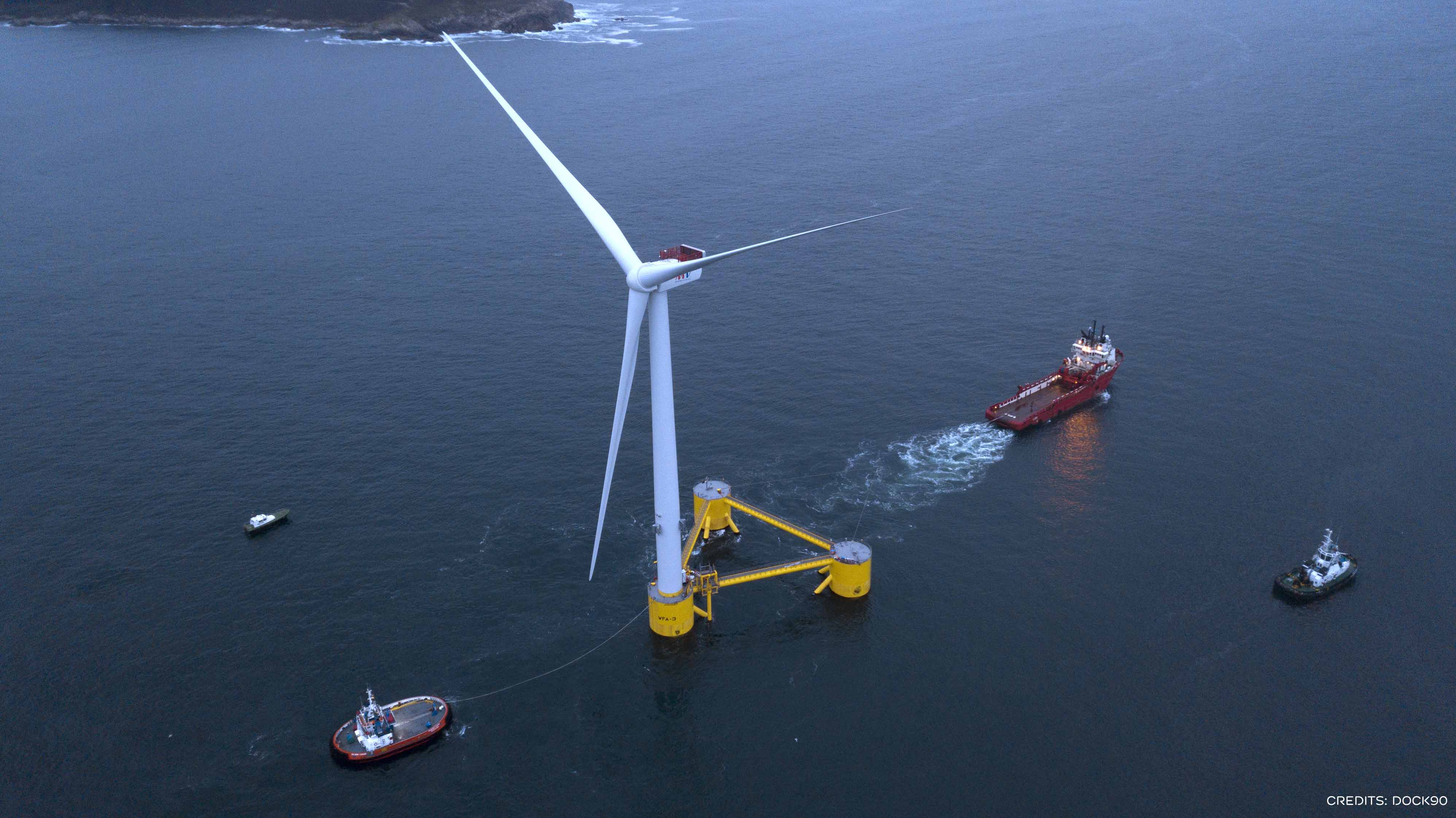
The second platform of the WindFloatAtlantic has set off from the Port of Ferrol

This operation builds on the successful installation of the first platform in October and will follow the same route from the Galician port to its final destination 20 km off the Portuguese coast.
Windplus is a consortium made up of EDP RENEWABLES, ENGIE, REPSOL and PRINCIPLE POWER.
Lisbon, 30 December 2019: WindFloat Atlantic has taken another important step towards entry into operations. The second of the three platforms, which make up the project, has left the Port of Ferrol for its final destination 20 km off the coast of Portugal at Viana do Castelo..
Upon arrival to the project site, it will be installed next to the first floating platform, which has the exact same dimensions: 30 metres in height and with a 50-m distance between each column. The third and final platform, once it arrives to the site, will complete the first floating offshore wind farm in Continental Europe.
Transportation of the three WindFloat Atlantic floating structures is a milestone in itself, as it sidesteps the need for towing craft designed specifically for this process and makes it possible for the project to be replicated in other geographies.
The structure, which has set off from the outer harbour of Ferrol, comprises a floating platform and the largest wind turbine ever installed on a floating structure. Once operational and with the installed capacity of 25 MW, the wind farm will be able to generate enough energy to supply the equivalent of 60,000 users each year.
About WindFloat Atlantic
The project is led by the Windplus consortium, comprising EDP Renewables (54.4%), Engie (25%), Repsol (19.4%) and Principle Power Inc. (1.2%). The facility has three wind turbines mounted on floating platforms which are anchored only with chains to the seabed at a depth of 100 m. It includes cutting-edge technology that minimises the environmental impact and facilitates access to untapped wind resources in deep waters. This technology has wide-reaching benefits that enhance its accessibility and cost-effectiveness, including its aptness for dry-dock assembly and towing without the need for specialised towing craft, or the advantages of not having to rely on complex offshore operations associated with the installation of traditional bottom-fixed structures. All of this makes it possible to replicate this initiative elsewhere, eliminating any geographical conditions on installing these types of facilities.
The WindFloat Atlantic units can also support the world’s largest wind turbines installed on a floating structure of 8,4 MW, helping to increase power generation and drive significant reductions in lifecycle costs.
The platforms are being built in cooperation between the two countries on the Iberian peninsula: two of them were manufactured at the Setúbal shipyards (Portugal), and the third at Avilés and Ferrol shipyards (Spain). The project uses WindFloat disruptive technology, which enables wind platforms to be installed in deep waters, inaccessible to date, where abundant wind resources can be harnessed.
This initiative has had the support from public and private institutions, encouraging companies that are leaders in their respective markets to take part in the project; while the Government of Portugal, European Commission and the European Investment Bank have provided financial support.
WindFloat Atlantic project builds on the success of the WindFloat1 prototype, which was in operations between 2011 and 2016. The 2MW prototype successfully generated energy uninterruptedly over five years, surviving extreme weather conditions, including waves up to 17 metres tall and 60-knot winds, completely unscathed.
The partners that have made this project possible include, in addition to Principle Power, the joint venture between Navantia/Windar, the A-Silva Matos Group, Bourbon, the wind turbine supplier MHI Vestas and dynamic cable supplier JDR Cables.